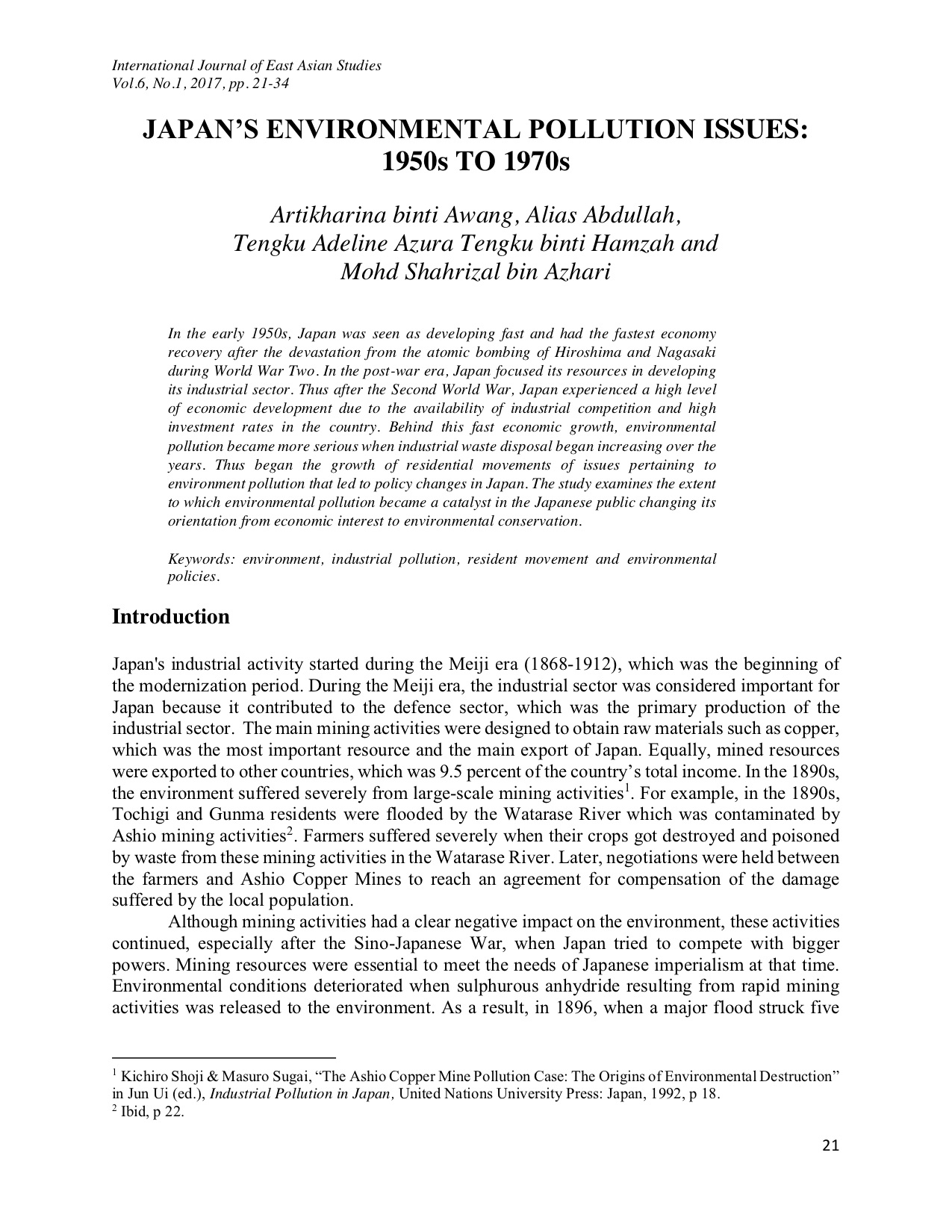Japan’s Environmental Pollution Issues: 1950s to 1970s
Main Article Content
Abstract
In the early 1950s, Japan was seen as developing fast and had the fastest economy recovery after the devastation from the atomic bombing of Hiroshima and Nagasaki during World War Two. In the post-war era, Japan focused its resources on developing its industrial sector. Thus after the Second World War, Japan experienced a high level of economic development due to the availability of industrial competition and high investment rates in the country. Behind this fast economic growth, environmental pollution became more serious when industrial waste disposal began increasing over the years. Thus began the growth of residential movements of issues pertaining to environmental pollution that led to policy changes in Japan. The study examines the extent to which environmental pollution became a catalyst in the Japanese public changing its orientation from economic interest to environmental conservation.
Downloads
Article Details
Copyright
Submission of a manuscript to the WILAYAH implies that the submitted work has not been published before (except as part of a thesis or report or abstract), that it is not under consideration for publication elsewhere; that all co-authors have approved its publication. The WILAYAH : International Journal of East Asian Studies adopts CC BY license. As such, we would be grateful if an acknowledgement accompanies the republication that the work was originally published in WILAYAH. The editors will ensure digital preservation of access to the journal content by the Journal depository section.
Disclaimer
Although the Department of East Asian Studies is the publisher of the WILAYAH : International Journal of East Asian Studies, the views presented in the WILAYAH are entirely those of the contributors and do not reflect the official stand of the Department of East Asian Studies. The Department does not hold itself responsible for the accuracy of any article published. Publisher and co-publishers assume no responsibility, nor by the editors for any injury and/or damage to persons or property as a result of any actual or alleged libellous statements, infringement of intellectual property or privacy rights, or products liability, whether resulting from negligence or otherwise, or from any use or operation of any ideas, instructions, procedures, products or methods contained in the material therein.

